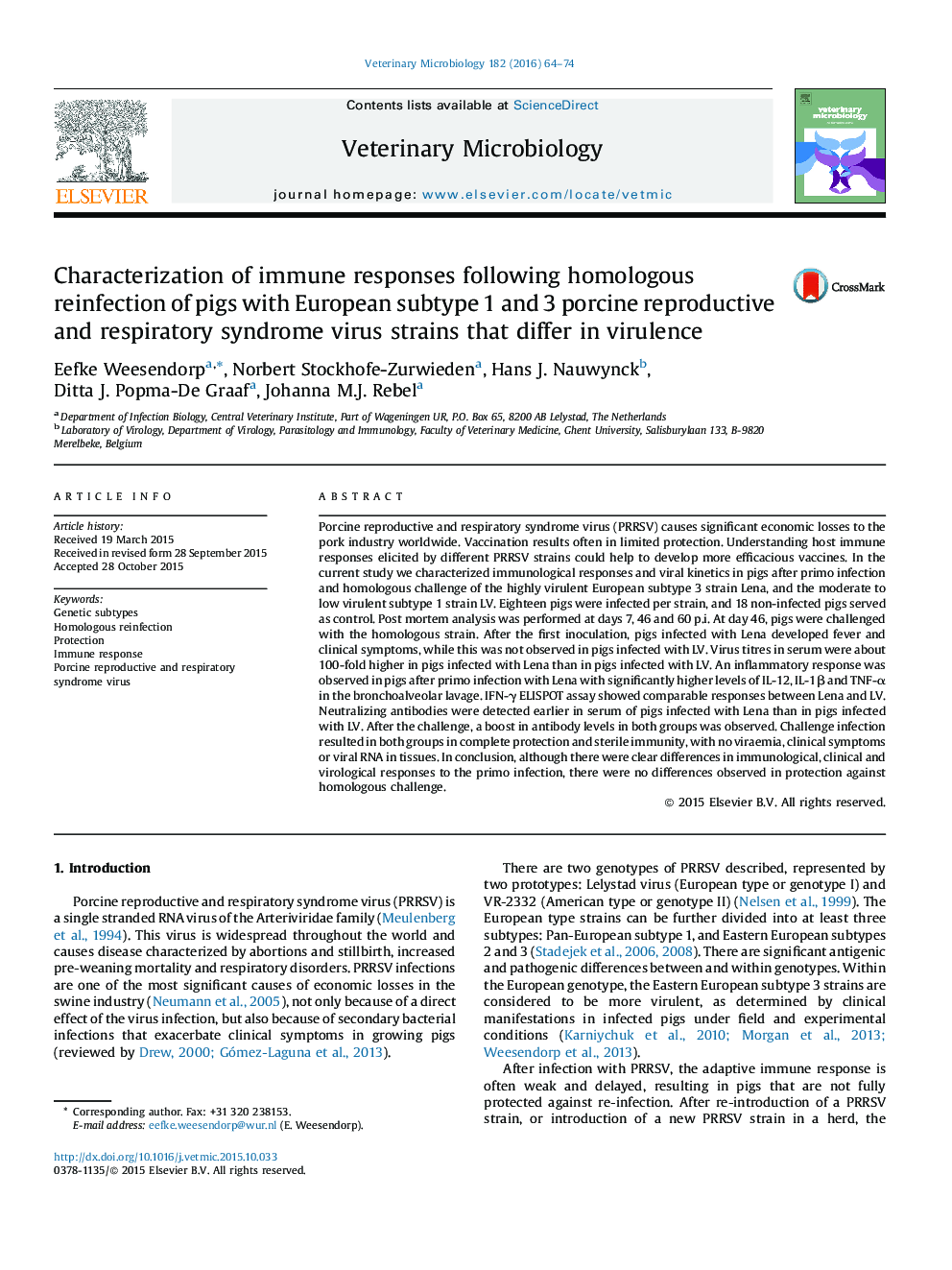| Article ID | Journal | Published Year | Pages | File Type |
|---|---|---|---|---|
| 2466487 | Veterinary Microbiology | 2016 | 11 Pages |
•We studied the effect of homologous challenge of EU subtype 1 and 3 PRRSV.•Subtype 3 induced stronger inflammatory responses than 1 after primo infection.•There were no differences between subtype 1 and 3 in protection after challenge.•Adaptive responses were comparable between subtype 1 and 3 infection.•Differences in in-vitro heterologous responses require further research.
Porcine reproductive and respiratory syndrome virus (PRRSV) causes significant economic losses to the pork industry worldwide. Vaccination results often in limited protection. Understanding host immune responses elicited by different PRRSV strains could help to develop more efficacious vaccines. In the current study we characterized immunological responses and viral kinetics in pigs after primo infection and homologous challenge of the highly virulent European subtype 3 strain Lena, and the moderate to low virulent subtype 1 strain LV. Eighteen pigs were infected per strain, and 18 non-infected pigs served as control. Post mortem analysis was performed at days 7, 46 and 60 p.i. At day 46, pigs were challenged with the homologous strain. After the first inoculation, pigs infected with Lena developed fever and clinical symptoms, while this was not observed in pigs infected with LV. Virus titres in serum were about 100-fold higher in pigs infected with Lena than in pigs infected with LV. An inflammatory response was observed in pigs after primo infection with Lena with significantly higher levels of IL-12, IL-1β and TNF-α in the bronchoalveolar lavage. IFN-γ ELISPOT assay showed comparable responses between Lena and LV. Neutralizing antibodies were detected earlier in serum of pigs infected with Lena than in pigs infected with LV. After the challenge, a boost in antibody levels in both groups was observed. Challenge infection resulted in both groups in complete protection and sterile immunity, with no viraemia, clinical symptoms or viral RNA in tissues. In conclusion, although there were clear differences in immunological, clinical and virological responses to the primo infection, there were no differences observed in protection against homologous challenge.
